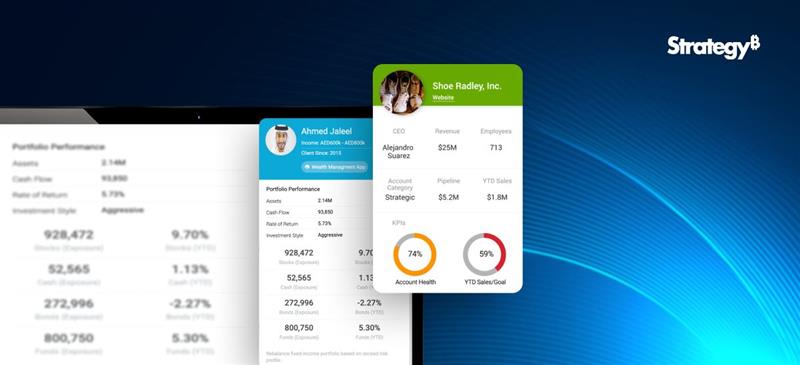What is Cloud Computing?
Cloud computing delivers computing resources, servers, storage, databases, and applications, over the internet, replacing traditional local infrastructure. These resources can be accessed anytime, anywhere, and on any device with an internet connection, providing businesses flexibility and agility.
Types of Cloud Services
1. Software as a Service (SaaS): SaaS providers host software applications and make them accessible to users via web browsers on a subscription basis. Popular examples include email services, CRM tools, and project management platforms.
2. Infrastructure as a Service (IaaS): IaaS offers virtualised computing resources like servers, storage, and networking. Businesses can build, deploy, and manage their applications on this infrastructure while maintaining control over the software.
3. Platform as a Service (PaaS): PaaS provides a platform for developers to create, test, and deploy applications without worrying about managing the underlying infrastructure. It offers more control than SaaS and requires less maintenance than IaaS.
Top Cloud Computing Trends for 2025
1. Rise of the Citizen Developer
The concept of the citizen developer is reshaping how applications are built. Non-technical users can now create apps using drag-and-drop tools, eliminating the need for extensive coding knowledge. Tools like Microsoft’s Power Platform and AWS’s HoneyCode are leading the way, enabling businesses to streamline workflows and innovate faster.
2. Enhanced AI and Machine Learning Capabilities
Cloud providers embed advanced AI and ML features into their services, making intelligent applications accessible to businesses without requiring in-house expertise. Companies like AWS, Google, and IBM are pioneering this space. For instance:
• AWS’s DeepLens camera supports machine learning integrations.
• Google Lens uses AI to provide real-time information from images.
• IBM continues to invest in enterprise AI solutions to revolutionise computing processes.
3. Increased Focus on Automation
From enhancing team efficiency to reducing downtime, automation tools are becoming more intuitive and robust. Investments in AI and citizen developer tools further simplify automation, allowing businesses to achieve greater operational efficiency.
4. Continued Investment in Data
The need for large-scale data analysis continues to grow, with a shift toward distributed computing environments powered by GPUs. This architecture allows businesses to run real-time analyses on vast datasets, revolutionising how data is processed, stored, and utilised.
5. Heightened Competition
The battle between AWS, Microsoft Azure, and Google Cloud Platform is intensifying, driven by competitive pricing, enhanced reliability, and innovative offerings. Expect these giants to continuously improve cost transparency and introduce new features to capture market share.
6. Kubernetes and Docker for Cloud Deployment
Kubernetes and Docker are transforming cloud application management. Automating deployment, scaling, and containerised application management enables developers to streamline workflows and quickly deploy scalable solutions.
7. Cloud Security and Resilience
As more businesses migrate to the cloud, providers heavily invest in security features like encryption, access controls, and disaster recovery solutions to ensure robust data protection and operational resilience.
8. Multi and Hybrid Cloud Solutions
The adoption of multi-cloud and hybrid cloud strategies is growing, allowing businesses to leverage the strengths of multiple providers while maintaining control over their data and applications. These solutions provide flexibility and minimise the risks associated with vendor lock-in.
9. Cloud Cost Optimization
Managing cloud costs is a top priority for businesses. Providers are developing tools for cost monitoring, budgeting, and optimisation, helping users make the most of their investments through reserved instance options and sizing recommendations.
10. Edge Computing
Edge computing minimises latency and bandwidth requirements by processing data closer to its source. This trend is crucial for real-time applications, enabling faster and more efficient data processing.
11. Disaster Recovery
With the rise in natural disasters and cyberattacks, disaster recovery solutions have become a vital focus. Cloud providers offer robust solutions that enable businesses to recover operations quickly and minimise downtime.
12. Innovation and Consolidation in Cloud Gaming
Cloud gaming is a booming market, with major players acquiring smaller companies to expand their portfolios. This trend is reshaping the gaming industry, offering more accessible, high-quality gaming experiences.
13. Serverless Computing
Serverless computing allows developers to focus on writing code without worrying about infrastructure management. This approach reduces operational costs, increases scalability, and accelerates development cycles.
Summing Up
As these trends demonstrate, cloud computing is transforming dynamically, unlocking new opportunities and redefining how businesses operate. Staying ahead of these trends will be crucial for organisations aiming to harness the full potential of the cloud in 2025 and beyond.




